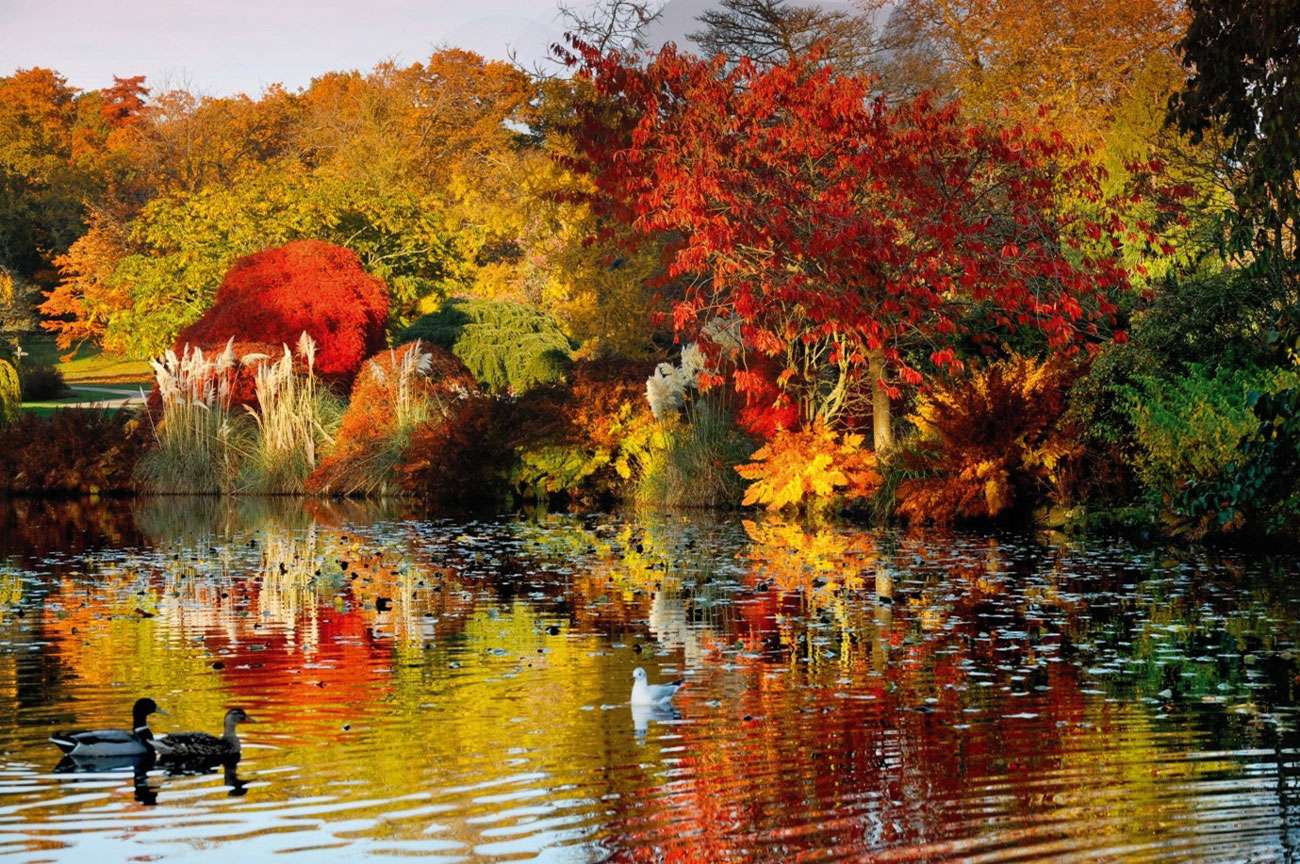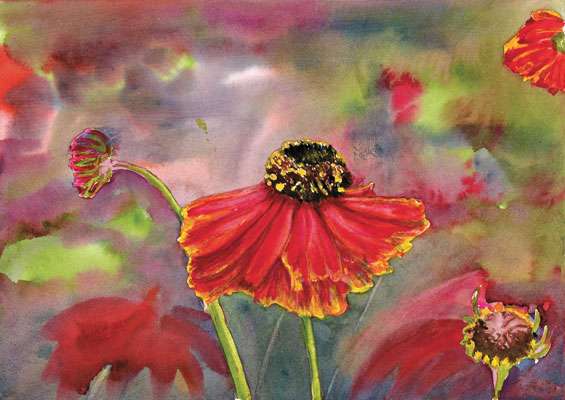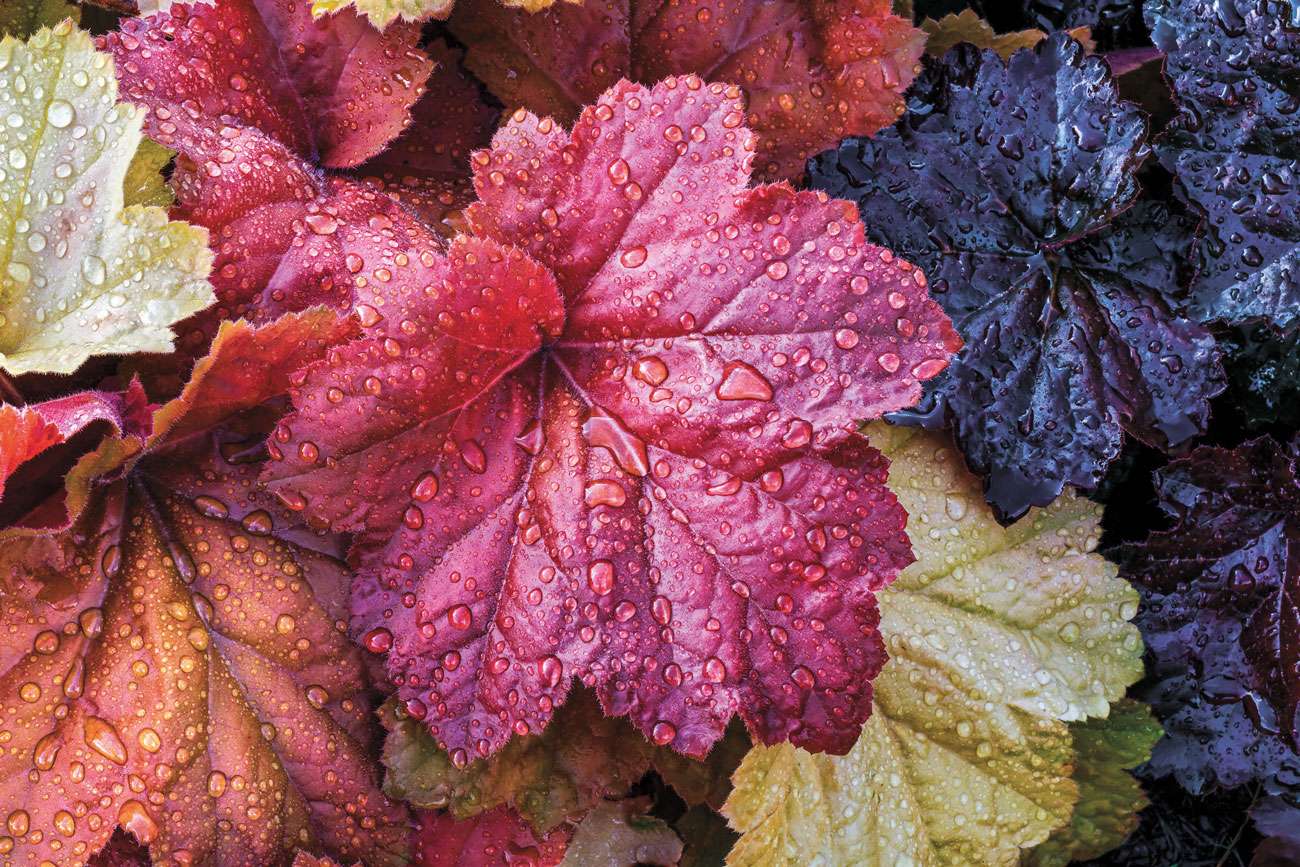
As we are becoming more and more aware of how the natural world has evolved, I have been exploring why deciduous leaves turn colour in autumn. As the tree becomes dormant, a compound called abscisic acid triggers a seal to develop at the base of the leaves, before they fall off. This reduces water reaching the leaf and traps the essential chemicals in the leaves, for the tree to use. They gradually break down, changing the colour of each leaf before it drops to the ground.
It is thought the red or purple anthocyanins either protect the leaf from cold temperatures or deter pests, such as aphids. The presence of these coloured compounds might allow the tree to reabsorb other valuable nutrients longer, as temperatures drop in autumn, so they are left in the leaf to help that process. As the process is gradual, individual leaves will be at different stages, so a tree will have leaves of many changing hues as autumn progresses.
The trigger for autumn colour to develop is a combination of day length and night temperature. As days shorten, the amount of sugar generated by photosynthesis drops off, and hormones in the plant trigger the leaf sealing and shedding process. This is accelerated by cold nights, but the lower temperatures also act on the compounds remaining in the leaf, breaking them down more quickly.
A warm dry ‘Indian summer’ followed by colder nights is the best combination, keeping the leaves working later and then shortening the leaf drop process. That way, more compounds remain in the leaf and there is less time for them to slowly break down to brown before the leaves drop. In a mild wet autumn, the whole process is much slower, so leaves are often completely brown before they fall and individual trees, and even single leaves, change colour at different times, reducing the whole spectacle. Nature is truly amazing!
It’s still bulb planting time and there are SO many varieties to choose from but here are a few tips for planting the bulbs:
- Daffodils should be planted 4 – 6” deep and 4 – 8” apart.
- Tulips should be planted at least 5” deep or 2-3 times the size of the bulb.
- Both tulips and daffodils should be planted 1/3 into the flower bed, so that perennials can be planted in front of them. The flowering bulbs are fully visible but as the perennial grows, it hides the dying and flopping leaves.
- Daffodils are normally planted in November and tulips in December, but it depends on the temperatures. I tend to plant before the frosts, so they are safe underground and they are not eaten by hungry, hibernating squirrels!
- The bulbs should be planted in odd numbers and I tend to plant them in 5s, repeated along the bed, so they lead the eye along.
It’s a good time to clean the greenhouse, to reduce the risk of bugs hiding in the warm space over winter. I take everything out and then make up a solution of Jayes fluid and water, and apply it all over with a soft broom. I then hose the whole greenhouse down, both inside and outside, then try to entice the water and debris through the one tiny drainage channel, which can take some time!
In my last article I said that tomatoes and potatoes can be grown where blight hit this year but I have been corrected by my friend John Menlove. Potato blight is caused by the Phytophthera Infestans and this fungus can also infect other members of the potato family, Solanacea, such as tomato, which was devastating this year. The fungus survives the winter in blighted tubers. These may remain in the soil after the previous crop, or in dumps where potatoes have been discarded. So, it is much safer to throw all the compost away and wash all pots that have been used – sounds like another dose of Jayes fluid!
I hope you enjoy the crisp autumn days.












